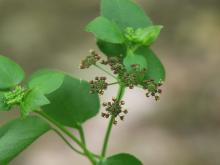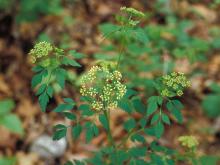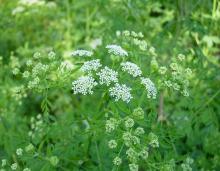Wildflowers, Grasses and Other Nonwoody Plants
Media

Species Types
Scientific Name
Anemone canadensis
Description
White anemone is a showy native wildflower with interesting, deeply toothed leaves. Often occurring in colonies, it spreads easily (even aggressively) from rhizomes and is sometimes cultivated in wildflower gardens.
Media

Species Types
Scientific Name
Ranunculus hispidus
Description
Hispid buttercup is a densely hairy plant with showy yellow flowers. It is found mostly in the southern half of Missouri, usually in moist locations.
Media

Species Types
Scientific Name
Ranunculus harveyi
Description
A slender little buttercup growing in rocky, dry areas with acidic soils, Harvey’s buttercup occurs mostly in southern Missouri. One key to identify it is to examine the basal and stem leaves, which are quite different.
Media

Species Types
Scientific Name
Thaspium trifoliatum
Description
One of our more challenging plants to identify, meadow parsnip looks an awful lot like golden Alexanders. But you can do it! Look closely at the flower clusters and at the edges of the leaves, and then check the seeds.
Media

Species Types
Scientific Name
Zizia aurea
Description
Named for its resemblance to a European herb that was popular in Medieval times, golden Alexanders is a native Missouri wildflower with bright yellow flowers arranged in umbrella-like clusters.
Media

Species Types
Scientific Name
Cicuta maculata
Description
Full grown, water hemlock looks something like a gigantic Queen Anne's lace, but this common, widespread member of the carrot family is the most toxic plant in North America. All parts are deadly. A piece of root the size of a walnut can kill a cow-sized animal.
Media

Species Types
Scientific Name
Packera spp. (formerly Senecio spp.)
Description
Ragworts, or groundsels, have several common names, and separating the different species can be a little tricky. But members of genus Packera, with their bright yellow daisy-like flowers, are distinctive as a group. Seven species have been recorded in Missouri.
Media

Species Types
Scientific Name
Packera plattensis (formerly Senecio plattensis)
Description
Prairie ragwort is one of seven Packera species in our state. It grows in sunny, open habitats. Look for its clusters of bright yellow, daisylike flowers in May and June.
Media

Species Types
Scientific Name
Packera glabella (formerly Senecio glabellus)
Description
Butterweed, one of Missouri’s seven species of ragworts or groundsels, is the only one that is an annual. It grows in colonies, at times covering acres of floodplain. Stems are heavily ridged and usually inflated or hollow. It blooms April–June.
See Also
About Wildflowers, Grasses and Other Nonwoody Plants in Missouri
A very simple way of thinking about the green world is to divide the vascular plants into two groups: woody and nonwoody (or herbaceous). But this is an artificial division; many plant families include some species that are woody and some that are not. The diversity of nonwoody vascular plants is staggering! Think of all the ferns, grasses, sedges, lilies, peas, sunflowers, nightshades, milkweeds, mustards, mints, and mallows — weeds and wildflowers — and many more!





















